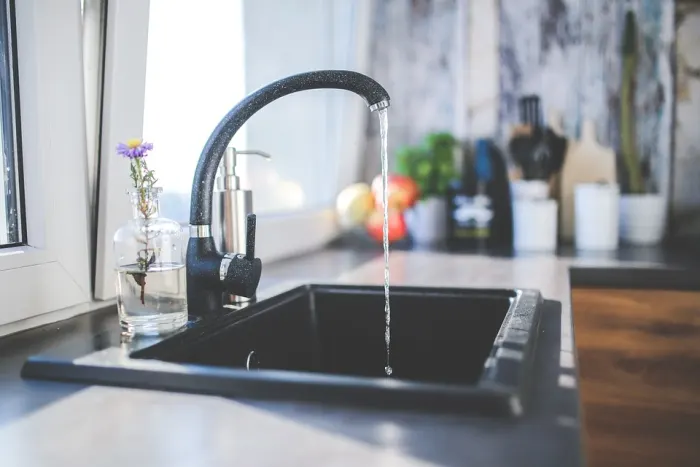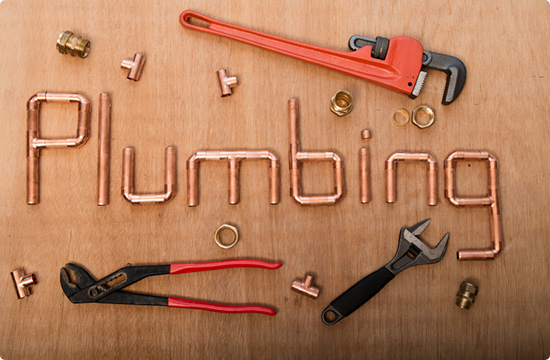The content listed below in relation to Why is My Home Making Strange Plumbing Noises is absolutely intriguing. You should investigate for yourself.

To identify noisy plumbing, it is necessary to establish very first whether the unwanted audios happen on the system's inlet side-in other words, when water is turned on-or on the drainpipe side. Sounds on the inlet side have varied reasons: too much water pressure, worn shutoff as well as faucet components, incorrectly attached pumps or various other home appliances, incorrectly placed pipeline fasteners, and also plumbing runs including too many limited bends or other restrictions. Sounds on the drain side usually originate from bad location or, similar to some inlet side sound, a layout consisting of tight bends.
Hissing
Hissing sound that happens when a faucet is opened a little typically signals excessive water stress. Consult your regional public utility if you presume this problem; it will have the ability to inform you the water pressure in your location and can mount a pressurereducing valve on the incoming water system pipe if essential.
Thudding
Thudding noise, commonly accompanied by trembling pipelines, when a faucet or device valve is switched off is a condition called water hammer. The sound and resonance are caused by the resounding wave of stress in the water, which all of a sudden has no location to go. Sometimes opening up a valve that releases water quickly right into a section of piping consisting of a constraint, elbow joint, or tee installation can generate the exact same problem.
Water hammer can usually be healed by installing installations called air chambers or shock absorbers in the plumbing to which the problem valves or taps are connected. These gadgets permit the shock wave created by the halted flow of water to dissipate airborne they contain, which (unlike water) is compressible.
Older plumbing systems might have brief vertical areas of capped pipeline behind walls on tap competes the same function; these can at some point full of water, reducing or ruining their effectiveness. The remedy is to drain pipes the water system entirely by shutting off the primary water supply valve as well as opening up all faucets. After that open up the primary supply shutoff and shut the taps one by one, starting with the tap nearest the shutoff and ending with the one farthest away.
Babbling or Screeching
Extreme chattering or shrilling that happens when a shutoff or faucet is switched on, which usually vanishes when the installation is opened totally, signals loose or faulty inner parts. The option is to change the valve or faucet with a brand-new one.
Pumps and also appliances such as cleaning machines and dishwashing machines can transfer motor sound to pipelines if they are poorly attached. Connect such items to plumbing with plastic or rubber hoses-never rigid pipe-to isolate them.
Various Other Inlet Side Noises
Squeaking, squealing, damaging, breaking, and also touching generally are caused by the expansion or contraction of pipes, generally copper ones supplying warm water. The sounds occur as the pipes slide versus loosened bolts or strike nearby house framing. You can typically determine the area of the issue if the pipes are subjected; just comply with the noise when the pipes are making noise. Most likely you will discover a loose pipe wall mount or an area where pipes lie so close to floor joists or various other mounting items that they clatter versus them. Connecting foam pipe insulation around the pipes at the point of contact should remedy the problem. Be sure straps and hangers are protected as well as offer sufficient support. Where possible, pipe bolts need to be affixed to substantial architectural aspects such as structure wall surfaces rather than to framing; doing so reduces the transmission of vibrations from plumbing to surfaces that can amplify as well as transfer them. If attaching fasteners to framing is inescapable, cover pipelines with insulation or various other durable material where they get in touch with fasteners, and also sandwich the ends of brand-new bolts in between rubber washers when installing them.
Correcting plumbing runs that suffer from flow-restricting limited or many bends is a last hope that should be undertaken only after speaking with a skilled plumbing service provider. Sadly, this situation is rather usual in older homes that may not have actually been constructed with indoor plumbing or that have seen a number of remodels, especially by beginners.
Drain Noise
On the drain side of plumbing, the principal goals are to eliminate surface areas that can be struck by dropping or rushing water and also to protect pipelines to consist of unavoidable noises.
In new building and construction, bathtubs, shower stalls, commodes, and wallmounted sinks and also basins need to be set on or against resistant underlayments to lower the transmission of noise via them. Water-saving toilets and also faucets are much less noisy than traditional models; install them as opposed to older types even if codes in your area still permit making use of older fixtures.
Drains that do not run up and down to the basement or that branch right into horizontal pipeline runs sustained at floor joists or various other framing present particularly troublesome noise troubles. Such pipelines are large sufficient to emit considerable resonance; they additionally carry considerable quantities of water, that makes the circumstance even worse. In brand-new construction, define cast-iron dirt pipes (the big pipelines that drain pipes toilets) if you can manage them. Their massiveness includes a lot of the sound made by water passing through them. Likewise, stay clear of routing drainpipes in wall surfaces shown to bedrooms and spaces where individuals collect. Wall surfaces containing drainpipes must be soundproofed as was defined previously, using double panels of sound-insulating fiber board and also wallboard. Pipelines themselves can be wrapped with special fiberglass insulation created the purpose; such pipes have an invulnerable plastic skin (occasionally containing lead). Results are not always satisfying.
WHY IS MY PLUMBING MAKING SO MUCH NOISE?
This noise indeed sounds like someone is banging a hammer against your pipes! It happens when a faucet is opened, allowed to run for a bit, then quickly shut — causing the rushing water to slam against the shut-off valve.
To remedy this, you’ll need to check and refill your air chamber. Air chambers are filled with — you guessed it — air and help absorb the shock of moving water (that comes to a sudden stop). Over time, these chambers can fill with water, making them less effective.
You’ll want to turn off your home’s water supply, then open ALL faucets (from the bathroom sink to outdoor hose bib) to drain your pipes. Then, turn the water back on and hopefully the noise stops! If you’re still hearing the sound, give us a call to examine further.
Whistles
Whistling sounds can be frustrating, as sometimes the source isn’t easily identified. However, if you can pinpoint which faucet or valve that may be the cause, you’ll likely encounter a worn gasket or washer — an easy fix if you replace the worn parts!Whistling sounds from elsewhere can mean a number of things — from high water pressure to mineral deposits. Your best plan of attack here is to give our plumbing experts a call. We’ll be able to determine where the noise is coming from and what the cause may be, then recommend an effective fix!
Cracks or Ticks
Cracking or ticking typically comes from hot water going through cold, copper pipes. This causes the copper to expand resulting in a cracking or ticking sound. Once the pipes stop expanding, the noise should stop as well.
Pro tip: you may want to lower the temperature of your water heater to see if that helps lessen the sound, or wrapping the pipe in insulation can also help muffle the noise.
Bangs
Bangs typically come from water pressure that’s too high. To test for high water pressure, get a pressure gauge and attach it to your faucet. Water pressure should be no higher than 80 psi (pounds per square inch) and also no lower than 40 psi. If you find a number greater than 80 psi, then you’ve found your problem!
Next step is to give us a call in order to install a pressure regulator. Trust us, you don’t want to wait to resolve this issue. Not only is the sound annoying, but high water pressure can be destructive to your home — including damaging certain appliances, like your washer and dishwasher.
Dripping
You might be accustom to the slow quiet drip your kitchen faucet makes. You might have even tuned out your bathroom sink dripping and drabbing all day long — but it’s time to find its cause.
A slow drip could signify a variety of easy to fix issues, such as a worn out O ring, or loose part. And by ignoring the drip, you could be wasting up to 2,000 gallons of water a year! So start conserving water — get it looked at ASAP.
https://www.pwessig.com/blog/2018/december/why-is-my-plumbing-making-so-much-noise-/

We had been made aware of that write-up about Diagnose Unwanted Plumbing Noises from someone on another website. Sharing is caring. Helping people is fun. I love reading our article about Why Do My Plumbing Pipes Make A Knocking Noise.
Click
Comments on “Identifying And Also Taking Care Of Plumbing Noises In Your House”